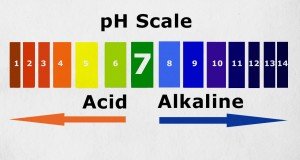Sauna bathing LOWERS risk of heart disease, according to scientific research
 (NaturalHealth365) Nearly half of adults in the United States (47%, or 116 million) have high blood pressure, which dramatically raises the risk of suffering heart disease or stroke. In fact, the U.S. Centers for Disease Control and Prevention (CDC) reports that high blood pressure was a primary or contributing cause of death for 670,000 Americans in 2020 alone. Yet, despite all the scientific evidence available, Western medicine says practically nothing about the heart-protective benefits of using a sauna, on a regular basis.
(NaturalHealth365) Nearly half of adults in the United States (47%, or 116 million) have high blood pressure, which dramatically raises the risk of suffering heart disease or stroke. In fact, the U.S. Centers for Disease Control and Prevention (CDC) reports that high blood pressure was a primary or contributing cause of death for 670,000 Americans in 2020 alone. Yet, despite all the scientific evidence available, Western medicine says practically nothing about the heart-protective benefits of using a sauna, on a regular basis.
For example, when it comes to lowering blood pressure, Americans would do well to take a tip from their Scandinavian counterparts. New research confirms that the time-honored Finnish custom of sauna bathing can help lower blood pressure and significantly reduce the risk of heart disease.
Sauna bathing duplicates some of the benefits of exercise
The practice of sauna bathing is highly prized in Finland for its physiological and emotional benefits. Over 3 million public and private saunas exist in a country with a population of 5.4 million people – a testament to the practice’s widespread popularity.
Researchers have long known that sauna bathing has cardiovascular benefits – but weren’t sure exactly why. Recent research, however, has revealed that sauna bathing causes skin blood flow to increase, leading to higher cardiac output.
This process closely mimics what happens during low- and moderate-intensity aerobic exercise – providing an important benefit for those who can’t or won’t tolerate the effort of exercise.
The Sauna Effect: What the study reveals
One study published in the Journal of Human Hypertension analyzed the effects of a 30-minute sauna session on 102 participants.
SHOCKING PROBIOTICS UPDATE: Discover the True Value of Probiotics and How to Dramatically Improve Your Physical, Mental and Emotional Wellbeing with ONE Easy Lifestyle Habit.
The team measured blood pressure before, immediately after, and 30 minutes after the sauna – and found that the participants’ systolic blood pressure dropped from an average of 137 mmHg to 130 mmHg, while diastolic blood pressure went from 82 mmHg to 75 mmHg. (The systolic, or top number, represents the pressure in the blood vessels when the heart beats – while the diastolic measures the pressure when the heart is resting between beats.)
The team noted that the decrease was still in effect 30 minutes after the sauna was over.
In addition, the researchers assessed carotid-femoral pulse wave velocity – a measure of arterial stiffness – and found that it decreased substantially. In other words, the sauna caused a beneficial relaxation of arteries that allowed blood to flow more freely.
During the sauna, the participants’ heart rates increased to a level seen with medium-intensity exercise. The study helped to confirm earlier research findings showing the benefits of regular sauna bathing – including lowered amounts of C-reactive protein, a biochemical marker of inflammation.
In a study published in JAMA Internal Medicine in 2015, researchers found that sauna bathing was associated with a reduced risk of sudden cardiac death and fatal coronary heart disease.
Frequent sauna bathing slashes risk of Alzheimer’s disease and other forms of dementia
The good news on sauna benefits just keeps on coming.
In a study published in Age and Aging, researchers analyzed the effects of regular 15-minute sauna sessions on over 2,300 healthy men aged 42 to 60 – and found that sauna bathing was associated with dramatic reductions in the risk of Alzheimer’s disease and other forms of dementia.
Two to three sauna sessions a week cut the risk of Alzheimer’s disease by a substantial 20 percent – an impressive result. But, when the team evaluated participants who took four to seven sauna sessions a week, they found that the odds of developing Alzheimer’s disease were slashed by an astounding 65 percent!
This result is especially significant in light of the fact that deaths from Alzheimer’s disease have skyrocketed 89 percent since the year 2000. (Of course, if a pharmaceutical drug were to achieve such a hefty risk reduction in developing the disease, the news would be trumpeted in headlines worldwide.)
Sauna bathing has anticancer effects
Sauna bathing has even been credited with providing a form of “heat therapy” that may fight cancer. Both the American Cancer Society and the National Cancer Institute acknowledge heat therapy as a promising way to improve cancer treatment and reduce tumor size.
Experts say that the heat produced by the sauna creates “heat shock” proteins on the surfaces of cancer cells, thereby “softening them up” for attack by the immune system.
As if that weren’t beneficial enough, heat from a sauna helps to activate natural killer cells and macrophages, which are sworn foes of tumors. Sweating induced by the sauna also helps the body detoxify and eliminate a variety of heavy metals, environmental toxins, and carcinogens.
In a review published in the medical journal Lancet Oncology, researchers credited sauna-style heat therapy with beneficial effects in boosting survival rates for cancer patients – particularly those with breast cancer and malignant melanoma.
(Of course, heat therapy is not a stand-alone therapy for cancer. Both conventionally-trained and integrative healthcare providers agree that it should be combined with other forms of cancer treatment.)
Plan to limit initial sessions to no longer than 20 minutes to avoid dehydration, dizziness, and faintness. And, get the thumbs-up from your doctor before starting your sauna routine – especially if you have a serious medical condition such as cancer or heart disease.
Then, get ready to enjoy an experience that is truly therapeutic, relaxing – and even “heart-warming.”
For more information about Sauna Therapy, listen to this special video presentation from Jonathan Landsman, founder of NaturalHealth365, on the best sauna he uses every day – at a dramatically lower cost compared to other saunas on the market.
Sources for this article include:











